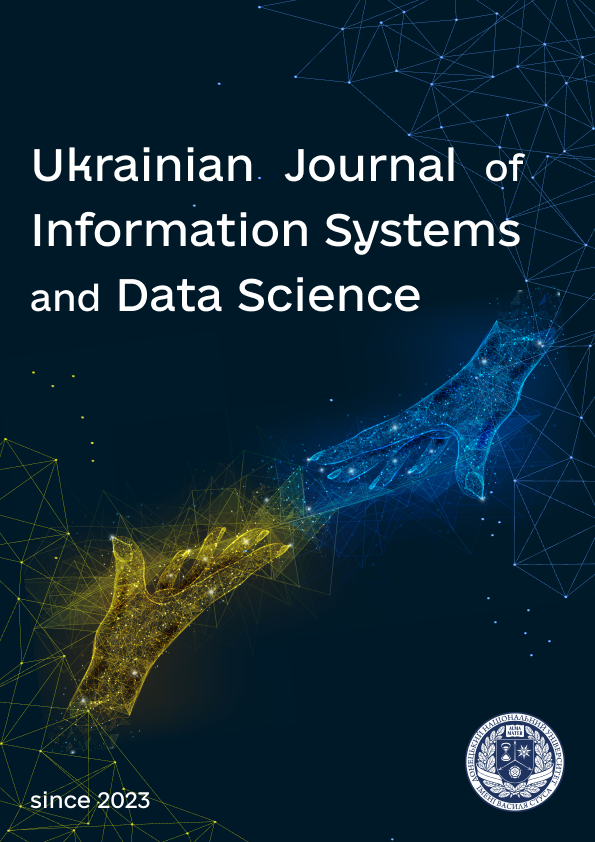Express identification of real functions of Ukrainian scientific professional journals based on the analysis of statistical distributions
DOI:
https://doi.org/10.31558/2786-9482.2024.2.2Keywords:
scientific journals, editorial board, PhD thesis, specialties, dataset, statistical distribution, unevenness, anomalies, correlation, Czekanowski index, UkraineAbstract
There are about 1,700 scientific professional journals in Ukraine, of which about 10% belong to the category A. Scientific journals, in addition to the basic function of disseminating new knowledge and fixing the priority of scientific results, also perform credit and commercial functions. When managing academic activities, questions arise as to whether such a number of national scientific journals is needed, whether they fully perform all their functions and how effectively. To answer these questions, it is necessary to know not only the total number of national scientific journals, but also their spectrum - belonging to certain research fields and specialties, as well as their connection with other indicators of scientific and educational activity. We have
collected experimental data and based on it, we have constructed statistical distributions of the number of Ukrainian professional journals, the normalized number of Ukrainian professional journals, the number of experts of the National Agency for Higher Education Quality Assurance of Ukraine and the number of PhD thesis defenses. The normalized number of Ukrainian professional journals is considered as a rough estimate of the number of professional journals in terms of specialties, statistical data for which are not available to us. All distributions turned out to be uneven with quartile coefficients from 14.8 to 81.7. The similarity of the distributions was assessed using the Czekanowski index. A high similarity was found in the distribution of the number of professional journals, and, accordingly, the distribution of editorial board members tangent to it, with the distribution of the number of experts of the National Agency for Higher Education Quality Assurance of Ukraine, which allows the hypothesis to be put forward about the similarity of the motives of these two academic communities. Most likely, the main motive is the acquisition of additional status, a feeling of some prestige from joining these communities. A high similarity was found in the distribution of the normalized number of professional journals with the distribution of the number of defended PhD theses, which allows the hypothesis to be put forward that professional journals are positioned precisely as a platform for postgraduate
articles.
References
Ярошенко, Т., & Ярошенко, О. (2024). Чи є майбутнє в наукових журналів? Зміни, виклики й тенденції в академічному видавництві. Відкрита наука та іновації, 1(2), 36–50. https://doi.org/10.62405/osi.2024.02.04
Wiryawan, K. G. (2014). The current status of science journals in Indonesia. Science Editing, 1(2), 71–75. https://doi.org/10.6087/kcse.2014.1.71
Putera, P. B., Suryanto, S., Ningrum, S., Widianingsih, I., & Rianto, Y. (2021). Policies of scholarly journal accreditation in Indonesia. Science Editing, 8(2), 166–171. https://doi.org/10.6087/kcse.250
Petreikis, T., Šuminas, A., Grigas, V., & Gudinavičius, A. (2024). Quantitative Changes in the Publishing of Lithuanian Scientific Journals in 2015–2022: Public and Private Sectors’ Adaptation to the Changing Conditions. Knygotyra, 82, 206–242. https://doi.org/10.15388/Knygotyra.2024.82.8
Bordignon, F. (2019). Tracking content updates in Scopus (2011–2018): A quantitative analysis of journals per subject category and subject categories per journal. In 17th International Conference on Scientometrics and Informetrics, ISSI 2019 – Proceedings (Vol. 2, pp. 1630–1640). International Society for Scientometrics and Informetrics.
Schubert, A. (2013). Measuring the similarity between the reference and citation distributions of journals. Scientometrics, 96(1), 305–313. https://doi.org/10.1007/s11192-012-0889-0
Wolfram, D., & Zhao, Y. (2014). A comparison of journal similarity across six disciplines usingciting discipline analysis. Journal of Informetrics, 8(4), 840–853. https://doi.org/10.1016/j.joi.2014.08.003
Yan Ma, Yingkun Han, Jiangtao Xu, Qian Chen, Shilin Zhao, & Zaiyi Zhang (2024). Analysis of the Distribution Characteristics of Journal Disciplines. In Proceedings of the 2024 Fifth International Conference on Education, Knowledge and Information Management (ICEKIM 2024) (pp. 1031–1041). Atlantis Press. https://doi.org/10.2991/978-94-6463-502-7_110
Aviv-Reuven, S., & Rosenfeld, A. (2023). A logical set theory approach to journal subject classification analysis: intra-system irregularities and inter-system discrepancies in Web of Science and Scopus. Scientometrics, 128(1), 157–175. https://doi.org/10.1007/s11192-022-04576-3
Mongeon, P., & Paul-Hus, A. (2016). The journal coverage of Web of Science and Scopus: a comparative analysis. Scientometrics, 106(1), 213–228. https://doi.org/10.1007/s11192-015-1765-5
Shtovba, S. & Petrychko, M. (2024). Ukrainian Journals 2025 Dataset. ResearchGate. https://doi.org/10.13140/RG.2.2.22868.51842
Shtovba, S. & Petrychko, M. (2024). NAQA Experts Dataset. ResearchGate. https://doi.org/10.13140/RG.2.2.16273.13922
Штовба, С. Д., & Петричко, М. В. (2024). Ідентифікація рівня спорідненості освітніх спеціальностей на основі аналізу профілей експертів НАЗЯВО. Наукові праці Вінницького національного технічного університету, (1). https://doi.org/10.31649/2307-5376-2024-1-48-59
Shtovba, S. (2024). Ukrainian PhD Theses Dataset. ResearchGate. https://doi.org/10.13140/RG.2.2.26405.00487
Bloom, S. (1981). Similarity Indices in Community Studies: Potential Pitfalls. Marine Ecology Progress Series, 5, 125–128. https://doi.org/10.3354/meps005125
Downloads
Published
How to Cite
Issue
Section
License

This work is licensed under a Creative Commons Attribution-NonCommercial 4.0 International License.

